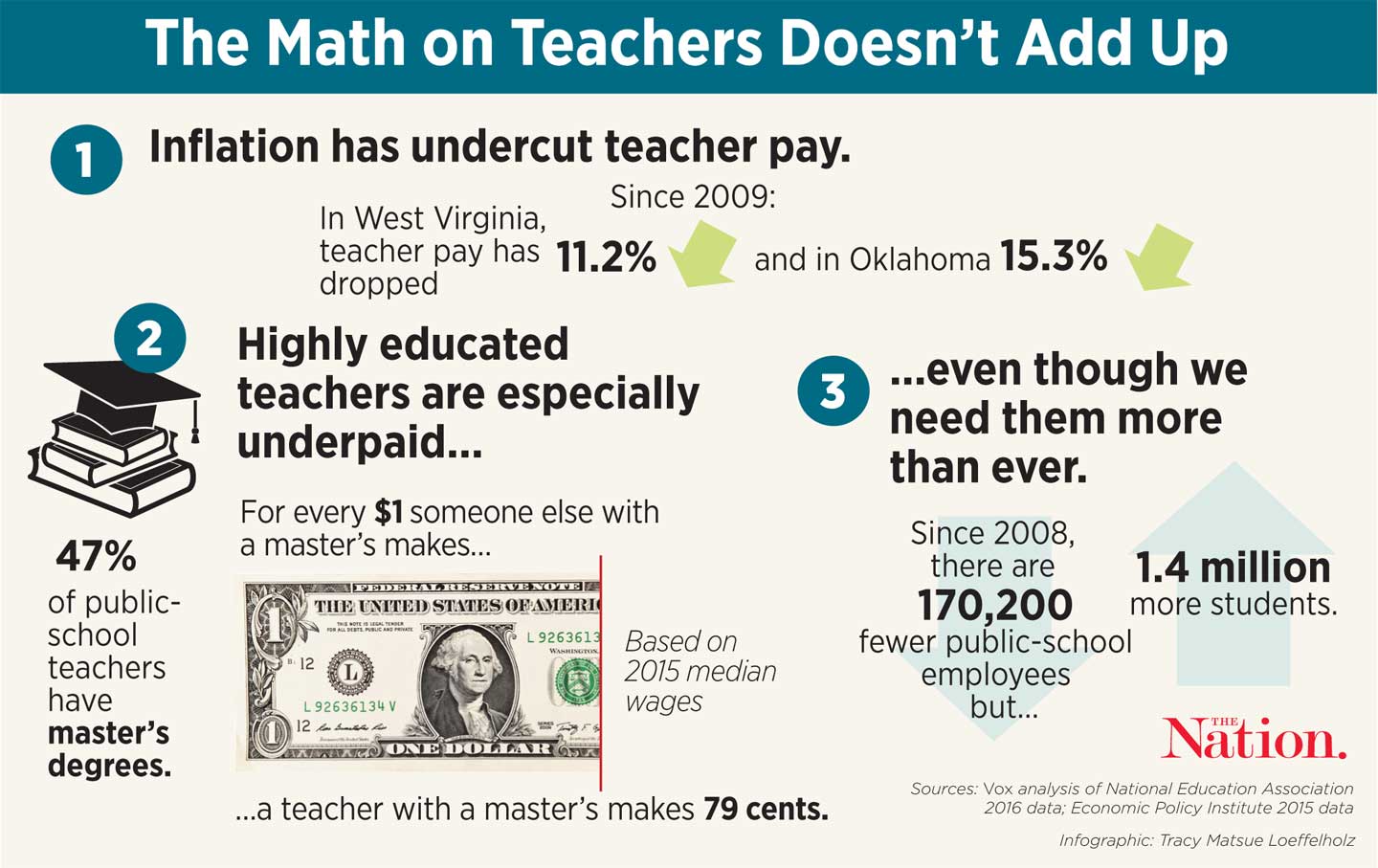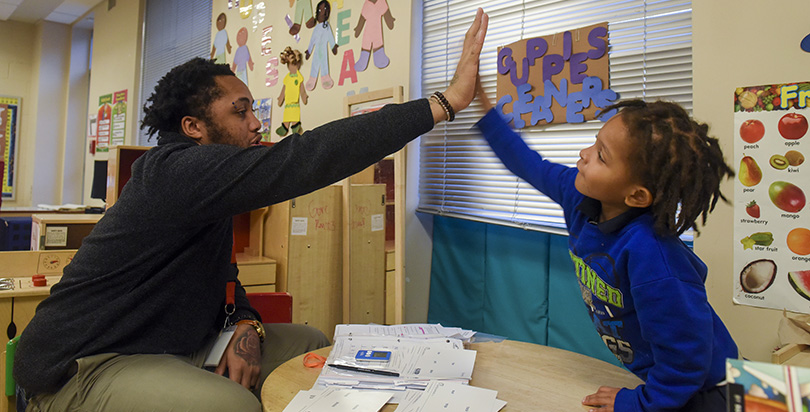7 Big Things You Should Understand About Teacher Pay, According to Teachers
Chances are you’ve witnessed a teacher at work. They taught you in your childhood and adolescence; they graded your tests and essays. Perhaps they also served as your high school soccer coach or drove the bus you took to school each day. They may now be shepherding your children through the same educational system, helping them strengthen basic skills and uncover their passions.
But as a student — or even a parent — you’ve probably only observed the basics. “People think they know what it’s about because they went to school,” says Randi Weingarten, president of the American Federation of Teachers, a union that represents more than 1 million teachers nationwide. “But going to school and being a school teacher are the difference of night and day.”
Over the last year, educators in a number of states have launched protests, strikes, and walkouts to draw attention to what they say is unfair pay and work conditions. Teachers have detailed the financial difficulties that come as the result of years-long pay freezes and growing pensions that dig deeper into their paychecks. Many of them work second or third jobs to make ends meet and pick up extra responsibilities in the school district for extra cash.
And that long-sought-after summer break, which corporate employees can only dream of? A lot of educators work then, too — teaching summer school, picking up more restaurant shifts than during the school year, or spending weeks in training and preparing new lessons plans.
Teaching in America now appears to have reached a tipping point. Low wages have driven some teachers out of the profession entirely, and fewer people want to become educators — heightening a teacher shortage crisis as class sizes grow larger and educators take on extra roles. Educators who spoke with MONEY believe they are undervalued, underpaid and underappreciated. They cited countless stories of peers who denigrated their careers and friends who misunderstood all that it takes to be a teacher.
“It’s an extreme amount of pressure. It’s like running a sprint that’s the length of a marathon; it’s just constant,” says Emily James, a high school English teacher in Brooklyn, N.Y. “You can’t mess up because you have kids right in front of you. You can’t mess up because they’ll break down. You have to be there physically, emotionally and academically at all times.”
MONEY asked more than 10 current and former teachers from around the country what they wished Americans understood about their jobs, their work conditions, and their pay. Here’s what we learned.
Teachers make less even than workers with similar qualifications.
Teachers have faced stifled wages and pay freezes for years. And a recent report from the Economic Policy Institute, a left-leaning organization, found that Continue reading: Teacher Pay: What Teachers Want Americans to Understand | Money










